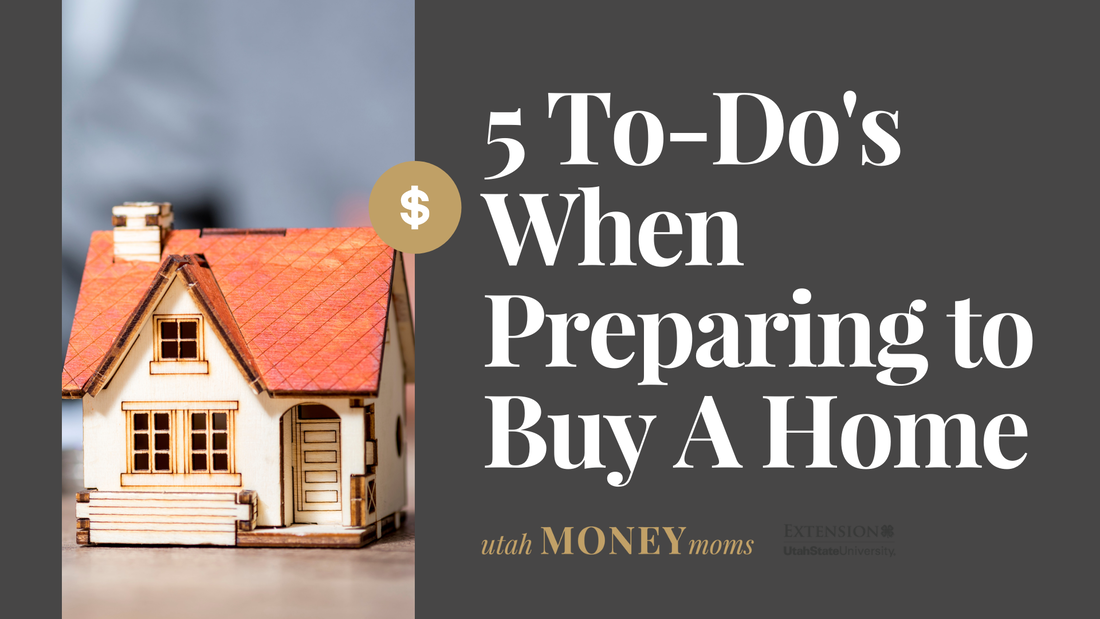|
McKenzie Walsh USU Extension Housing Expert In the process of purchasing a home, there are more expenses to be prepared for beyond the cost of the home itself. Tracking your expenses and budgeting your money to save for these costs is important. Researching areas you would like to live and homes that you are interested in buying will help you determine how much you need to save. Below are four costs to consider in addition to the purchase price.
0 Comments
Jerevie Canlas, Ph.D, CFLE Empowering Financial Wellness Program Coordinator  While buying a home can be a very exciting process, it is more than just touring homes and driving through neighborhoods. The average time it takes to buy a home is around 6 weeks, but that only accounts for the time between getting pre-approved for a mortgage loan and when you finally get the keys to your new home. Before you start, you need to have done your homework, namely; evaluate your financial situation, choose the right neighborhood, and pick a realtor who has your best interest; in that order. One of the most common mistakes homebuyers make is looking at a home they can’t afford. Here’s a few things to consider when evaluating your financial situation in preparation for probably the biggest purchase you’ll ever make in your life: McKenzie Walsh USU Extension Housing Expert The American Dream has been and will always be to own a home. The idea of painting your walls, hanging photos with nails, and building equity is very enticing. But it is important to make sure that you are ready for what could be the largest purchase you make. Below are four tips for a future home buyer:
KristiLyn Wilkinson, M.S. AFC Candidate Empowering Financial Wellness Program Coordinator  Housing is often the largest expenditure that people make. If you take the full 30 years to pay off your mortgage, you can pay as much as three times the original amount you purchased. Owning a home is a big part of the “American Dream” for many people, and while it is true that homeownership builds stable communities and may help you build wealth and equity, that doesn’t mean it is right for everyone in every situation. There are many factors that come into play when considering if it’s the right time to purchase a home or if you should continue to rent. Here are a few things to consider. Stacy Abbott, USU Extension Housing Expert  Finding financing to purchase a home can be overwhelming. There are a variety of loan products available, not to mention the number of lenders that are offering financing. FHA financing could be the answer for purchasing your next home. Here is a list of the features of a FHA Mortgage: Lower down payment requirement. With a down payment requirement of only 3.5%, FHA financing makes home ownership more achievable. On a $200,000 home value a 3.5% down payment would be equal $7,000. That is much less than the $20,000-$40,000 that may be required with a conventional mortgage for the same home value. More generous debt-to-income ratios. The amount a consumer can borrow is based on a debt-to-income ratio. Debt-to-income ratios are calculated by dividing the households total monthly debt payments including the mortgage payment by the gross monthly income. (Debt to Income Ratio = Monthly Debt Payments / Gross Monthly Income) At 43%, FHA has a more lenient debt-to-income ratio when compared to the standard conventional mortgage ratio of 36%. FHA borrowers with 10% down payment may be able to qualify with a debt-to-income ratio as high as 50%. Lenient credit score requirement. Borrowers with lower credit scores typically have an easier time accessing FHA financing versus other mortgage loans. The minimum credit score for an FHA mortgage is 580 whereas a conventional loan usually requires a credit score of 620 or higher. Mortgage insurance is required and may continue for the full term of the mortgage. In most mortgage transactions, mortgage insurance is charged to borrowers who have less than a 20% down payment. This insurance is paid by the borrower to protect the lender in the event that the borrower is unable to make the mortgage payment. With FHA financing, this insurance will be charged as an upfront fee and as a monthly fee. If the borrower pays less than a 10% down payment, the monthly charge will continue for the life of the loan. In this case, the mortgage insurance could only be removed by refinancing. Borrowers with a higher down payment could remove the mortgage insurance earlier. |
TAKE A FREE CLASS!Host a ClassamandaSharing real-life money smarts to help you stay on track with financial goals while still enjoying life! Follow the fun on InstagramAS SEEN ONawardsBest of State 2022 & 2023: Personal Finance Education
1st Place National Award in Social Media Education from the National Extension Association of Family and Consumer Sciences
Gold Award in Blog Site category at the 7th annual Education Digital Marketing Awards.
Platinum Award in Digital Media, Web Design category at the International Marketing and Communication Awards.
Categories
All
|












